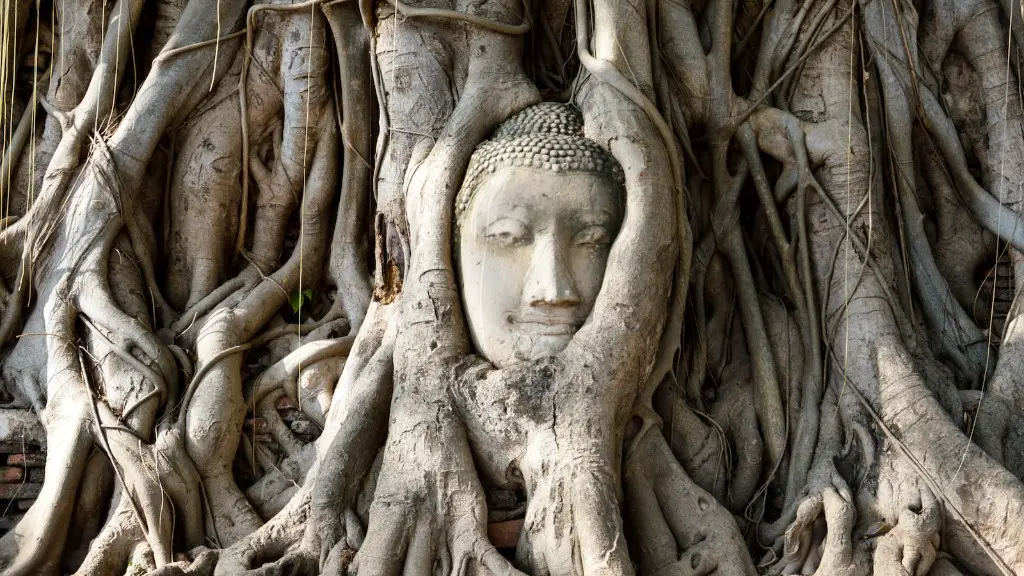Buddhism first came to China in the 1st century CE, during the Han dynasty, through missionaries from India. These missionaries introduced the basic concepts of Buddhism, and over the next centuries, Buddhism slowly began to spread throughout China. By the time of the Tang dynasty, Buddhism had become one of the dominant religions in China. There are several reasons why Buddhism became popular in China. First, the Chinese people were attracted to the idea of enlightenment, or nirvana. Second, Buddhism offered a different way of looking at the afterlife, which was appealing to many people. Third, Buddhism emphasized compassion, which was a value that was important to the Chinese people. Fourth, Buddhism became popular because it was supported by powerful people, such as the Tang emperor Xuanzong.
Buddhism was spread to China mainly through the efforts of missionaries from India, Central Asia, and Tibet. These missionaries traveled to China and introduced the Chinese to the basics of the Buddhist faith. They also helped to establish Buddhist temples and monasteries in China, which served as centers for the spread of Buddhism. In addition, Buddhist monks and nuns often traveled to China to teach the dharma, and many Chinese pilgrims journeyed to India and Central Asia to learn more about the religion. Through these various efforts, Buddhism slowly began to take root in China.
How was Buddhism spread into China and Japan?
Buddhism was officially transmitted to Japan in 525, when the monarch of the Korean kingdom of Baekje sent a mission to Japan with gifts, including an image of the Buddha, several ritual objects, and sacred texts. Buddhism’s journey from India to China, Korea, and Japan had taken about a thousand years. In Japan, Buddhism quickly gained popularity among the ruling class and the general population. During the Heian period (794-1185), a particularly refined and sophisticated form of Buddhism known as Pure Land Buddhism became popular among the Japanese aristocracy. Pure Land Buddhism stresses faith in the Buddha Amitabha and the practice of reciting his name as a means of being reborn in his paradise, known as the Pure Land.
Buddhism is a religion that was founded by Siddhartha Gautama, also known as the Buddha, in the 6th century BCE. The Buddha was born in what is now Nepal, and he lived and taught in India. Buddhism spread to China during the Han period (206 BC-220 AD). It is a religion that teaches that the way to end suffering is to end desires.
What was one reason why Buddhism spread in China
The Silk Road was a key factor in the spread of Buddhism to China. Foreign merchants, refugees, envoys and hostages who passed through the Silk Road helped spread Buddhism by word of mouth. Buddhism became a popular religion in China because it was seen as a religion of peace and compassion.
Buddhism is a religion that was founded by Siddhartha Gautama, who is known as the Buddha. It is an important religion in many Asian countries. Buddhism teaches that there is suffering in life, but that it can be overcome by following the Noble Eightfold Path. This path includes things like developing wisdom and understanding, practicing meditation, and living in a way that causes the least amount of harm to others.
How did the spread of Buddhism in China became easier?
The Ming emperor of China invited the Buddhist bhikkhus Dharmarakshaka and Kashyapmatanga to China in the first century CE. The Bhikkhus translated many Indian Buddhist texts into Chinese language. This made the spread of Buddhism in China easier.
The development of trade along the Silk Roads allowed for the expansion of Buddhism into eastern Asian lands, especially in Thailand and Indonesia. Excavations have shown the interaction of these lands with Buddhist institutions linked to trading groups. This expansion of Buddhism led to the development of new Buddhist traditions in these regions, which are still evident today.
How did Buddhism arrive in China quizlet?
Buddhism is a religion andphilosophy originating in India that teaches that the way to liberation from suffering and rebirth is through eliminating attachments to the material world. The Buddha was born Siddhartha Gautama in Nepal in the 6th or 5th century BCE. He is the founder of Buddhism. After his death, his followers spread Buddhism to中国 central Asia, Korea, Japan, and Vietnam.
Buddhism entered China during a time of political turmoil and cultural decline. To bridge the gap between India and China, the earliest Buddhist translators used Taoist vocabulary to express Buddhist ideas. This allowed Buddhism to take root in China and become an integral part of Chinese culture.
Today, Buddhism is one of the largest religions in the world, with over 500 million followers worldwide.
Buddhism first came to China from India in the 1st century CE, and it quickly became a major part of Chinese life. Xuan Zang, a well-known Chinese Buddhist monk, helped make Buddhism widely known in China by bringing back Buddhist scriptures from India in the 7th century CE. Buddhism continued to spread during the Tang dynasty, and by the 10th century, it was one of the most popular religions in China.
How did Buddhism go from India to China
The spread of Buddhism across Asia was greatly facilitated by the development of overland and maritime trade routes between India, Southeast Asia, Central Asia, and China. These routes not only served as channels for the exchange of goods and materials, but also as conduits for the exchange of ideas and culture. In particular, the spread of Buddhism to Central Asia and China coincided with the emergence of the Silk Roads as a key network of trade and cultural exchange.
Chinese Buddhism suffered extensive repression and persecution during the Cultural Revolution from 1966 until 1976 when Mao Zedong died. This resulted in the destruction of many temples and the loss of many texts and artifacts.
How did Buddhism started and spread?
Buddhism is a religion that originated in Ancient India in and around the ancient Kingdom of Magadha. It is based on the teachings of the ascetic Siddhārtha Gautama. The religion evolved as it spread from the northeastern region of the Indian subcontinent throughout Central, East, and Southeast Asia.
Buddhism was spread outside India through the efforts of missionaries, scholars, trade, emigration, and communication networks. Foreign monks who travelled along the silk route between India and China were responsible for the spread of Buddhism at sub-elite levels.
What is one reason why Buddhism spread quickly
Buddhism spread so rapidly worldwide because the simplicity and clarity of Gautam Buddha’s teachings and his principles were very appealing to various peoples. The universal appeal of his message of love, compassion, and understanding resonated with people of all cultures and religions. Buddha’s message was one of hope and peace, and his inclusive approach to spirituality attracted people from all walks of life.
Buddhism first arrived in China via the Silk Road during the Han Dynasty, though it struggled to find acceptance at first. This changed when the Emperor Mingdi of the Liu Song Dynasty became a convert and began publicly supporting the religion. This patronage continued under the short-lived Sui Dynasty, and Buddhism really began to take root during the Tang Dynasty. With the powerful imperial court behind it, Buddhism began to spread rapidly throughout the country. The support of the general population was also important in helping Buddhism to establish itself in China. Over time, the religion became more deeply ingrained in Chinese culture, and today it is one of the country’s major faiths.
Who helped spread Buddhism from India to China?
Xuanzang’s Journey to the West is one of the most famous stories in Chinese literature. The story tells of the monk’s 17-year journey to India to obtain Buddhist scriptures, and his subsequent return to China. Xuanzang is a significant figure in Chinese Buddhism, and his story has been retold in many different forms over the centuries.
Buddhism has been a major source of inspiration for Chinese philosophy, ethics, literature, art, and religion. It has also had a significant impact on the development of the Chinese language. The arrival of Buddhism in China marked a new era in the history of Chinese thought, and itsoon became one of the most influential philosophies in the country. Buddhism not only introduced new ideas to China, but also adapted to and made use of the local culture and thought. This process of adaptation and appropriation has continued throughout the history of Buddhism in China, and has resulted in the formation of a unique Chinese Buddhist culture.
Warp Up
Buddhism was spread to China through the Silk Road Trade Route.
Buddhism was first brought to China by missionaries from India in the first century A.D. It was slowly accepted by the Chinese people and became a major religion in the country. Buddhism was later spread to other parts of Asia by Chinese monks and missionaries.

